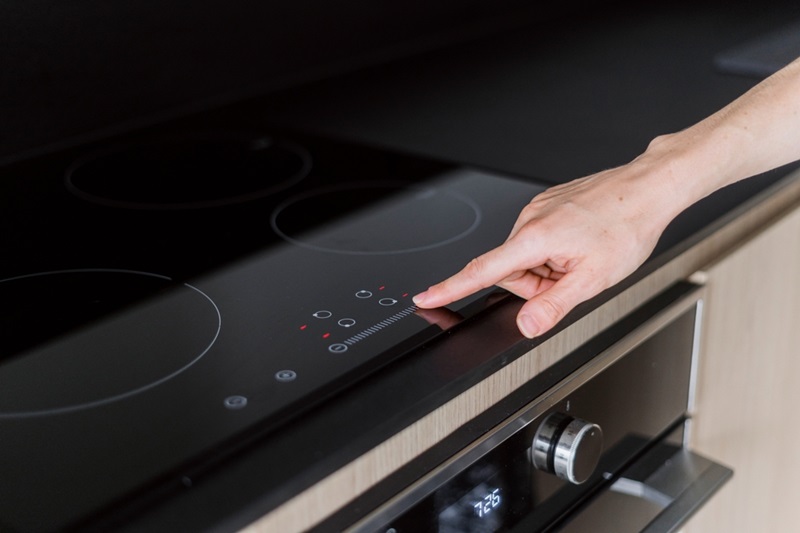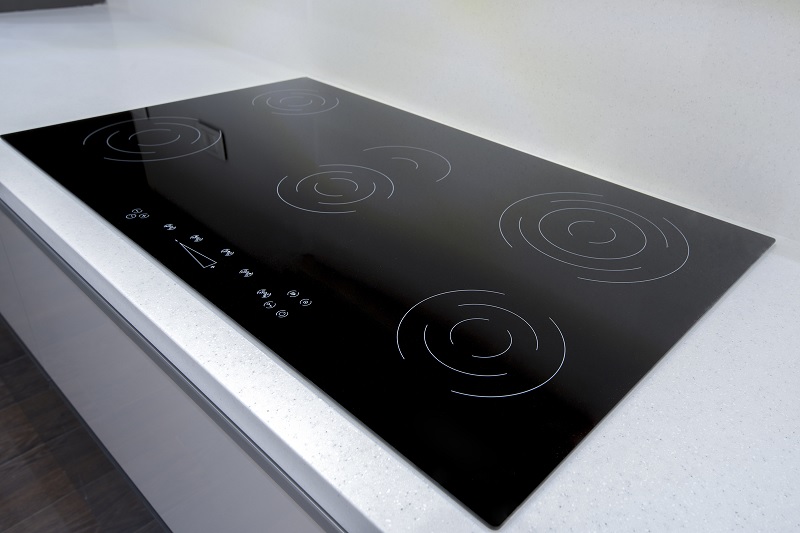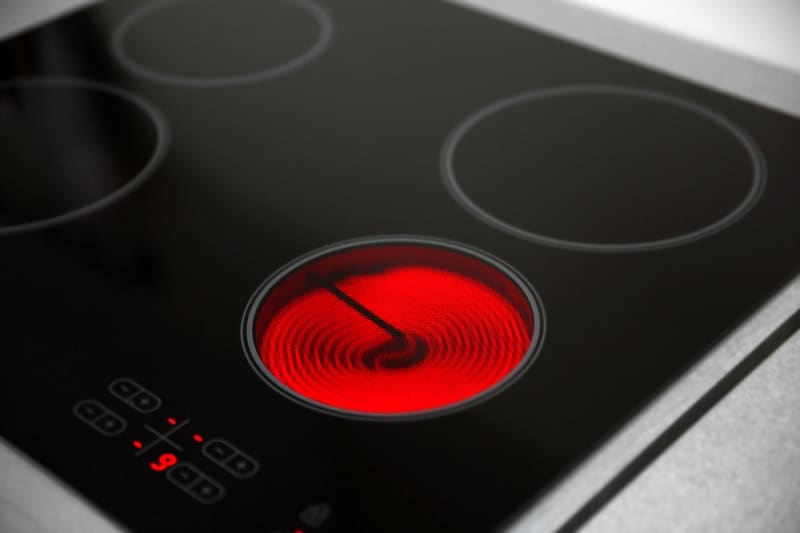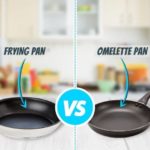The battle between ceramic hobs and induction hobs has become increasingly heated (pun intended) over the years.
If you’re getting a new kitchen fitted and are wondering what the differences are between these hobs, this is the article for you. We’re looking at ceramic hobs and inductions hobs today to find out what they have in common and what makes them different.
We will then discuss which hob you should buy for your kitchen. So, stick around, this hob debate is about to get scorching!
Ceramic Hob vs. Induction – The Similarities
So, what are the similarities between induction and ceramic hobs?
- Streamlined look – Of course, both of these hob types offer a streamlined look that can look great in any modern kitchen.
- Easy to clean – They both also have a glass top making them very easy to clean.
- Ceramic glass surface – The top surface of both ceramic and induction hobs is made from ceramic glass, which is why they look virtually identical. ‘Ceramic’ refers to the material that is used for the top of a ceramic hob, while ‘induction’ refers to the cooking technology underneath the cooking surface. So, the reason that induction hobs look very similar to ceramic hobs is that the cooking surface is made from the same material.
- No pan supports – There are also no pan supports that you have to take off to wipe the surface of the hob, which helps make these hob types look very modern and streamlined.
- Relatively child friendly – Both ceramic and induction hobs have heat indicators and safety locks, making them very safe in houses with kids.
- Require electric power supply – Also, both induction and ceramic hobs require a specific electric supply that must use the correct cables. This is why it is always worth having a qualified electrician install your new hob.
That is where the similarities between these hob types end. They are both streamlined, can add plenty of style to a kitchen and are easy to clean. So, what about the differences?

Ceramic Hob vs. Induction – The Differences
- Ceramic hobs are cheaper – Ceramic hobs are the perfect hob for anyone on a tight budget. They are typically cheaper than induction hobs. This type of hob is quick to get used to and is very versatile. There are loads of different styles of these hobs to choose from too, so you can really customise your kitchen just by choosing one style over the other.
- Induction hobs are more energy efficient – Ceramic hobs are fairly energy efficient, but not as energy efficient as induction hobs.
- Induction hobs heat up quicker – Ceramic hobs also do not heat up as fast as a gas or induction hob. They are certainly faster than an electric hotplate, for example, but gas and induction always win the speed race.
- Induction hobs offer more control – Most models of ceramic hobs are also not as controllable as induction hobs. Most ceramic hobs have around 5-8 heat levels per hob ring, while many induction hobs have endless control over heat levels and heat up and cool down a lot quicker than a ceramic hob too.

Summary of the Differences
Now, you may think that induction hobs are just a ceramic hob with a hefty price tag. However, when you’re cooking, induction hobs are actually more like gas hobs than a ceramic hob. Induction heats up just as quickly as gas and they provide the fine control of heat that gas does too.
As induction hobs work with magnetism, it is the pan that heats up, not the hob itself. This generates heat a lot faster than a ceramic hob can. But you can also control that heat precisely too, thanks to the very easy to use controls. And induction hobs are also amazingly energy efficient because they heat the pan, not the hob.
Thanks to the way that induction hobs work, there are loads of different styles to choose from. However, one of the most popular styles of hob right now is the zoneless induction hob. This has no rings at all. Just pop your pan anywhere on the hob surface, and you can cook. This means that you can use any number of pots and pans on the hob at once and control each area’s heat perfectly.
There’s a lot to love about induction hobs, and they are pretty different from ceramic hobs as you can see. They are more expensive, more energy-efficient, more controllable and more conducive to a busy kitchen. Still, which hob should you buy?
In summary, here’s a quick comparison.
Induction:
- Heats up quickly
- Gives loads of control
- Extremely stylish
- Highly energy efficient
- Up to date safety features (locking controls, example)
Ceramic:
- Slower to heat up
- Not as much control of heat
- Not as stylish (some higher-end models are)
- Less energy efficient
- Only higher-end models have locking controls (most ceramic hobs do have heat indicators, though)
- More affordable

Ceramic Hob vs. Induction – Which Should I Buy?
Ceramic hobs are a brilliant choice if you want a simple hob that looks good. If you just want a hob that is going to heat up some sauce, boil some veg and fry the odd steak, there is nothing wrong with buying a ceramic hob. You’ll save yourself some money and still get a good quality hob that will last several years.
However, if you love cooking or just want to speed the cooking process up, induction is the way to go (see the best induction hobs here).
Induction hobs are expensive. However, they look amazing and perform so well. They heat food up so fast, boil water like no one business and provide the ultimate control in the kitchen too.
If it were our choice, we would choose induction. This hob type makes cooking fun and easy. Many induction hobs also have brand new features to the market that can help you enjoy cooking even more too.
We’ve all heard that buying an induction hob means that you have to buy completely new cookware to use on it. This additional cost may put many cooks off of buying induction. However, most cookware nowadays is suitable for an induction hob. Give your cookware a test with a magnet, if the magnet sticks, your current cookware will work with an induction hob.
We hope this look at ceramic and induction hobs has been helpful. There are plenty of differences between these hob types.
Just think of ceramic as a standard hob that does some solid work, and induction more like a gas hob of the future. It does the same job, but does it a little bit better and looks a bit better as it does it too.
For more info about induction hobs and the cookware that is purpose-built for them, please explore our website further. We have all of the cookware you need to make your induction hob the most valuable tool in your kitchen.

Scott is a writer and a passionate home chef. His passion for cooking began when he was 10 years old. Scott has been writing professionally for over five years now and loves to combine his passion for cooking with his day job.







